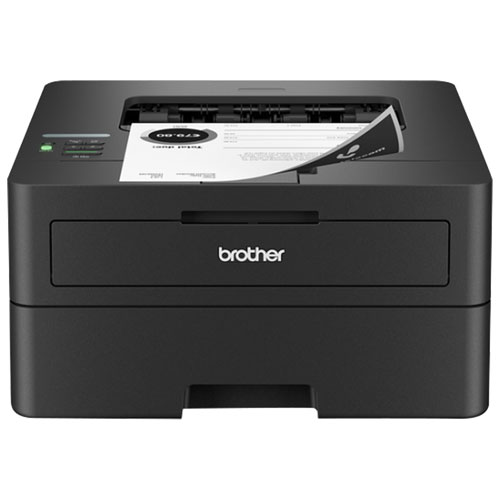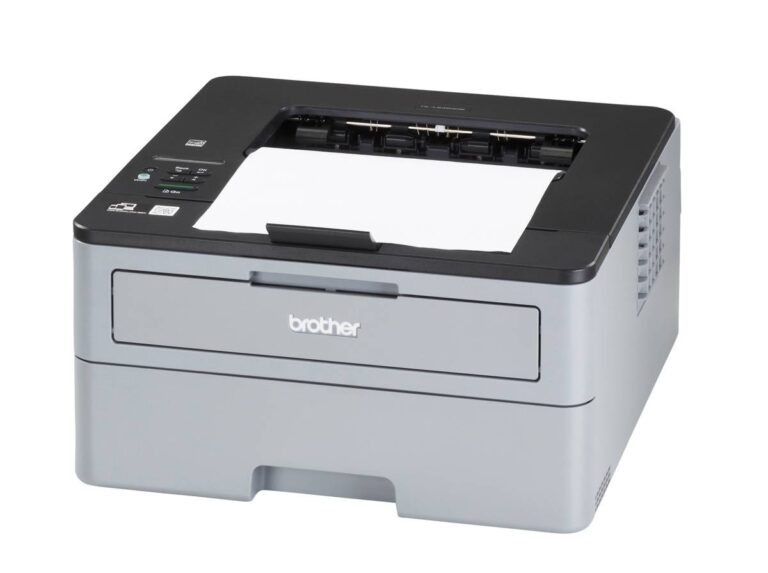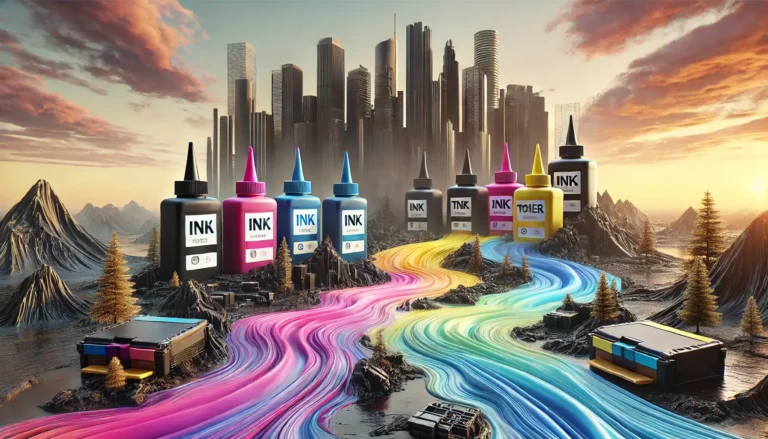Before you get to all of the different makes and models of printer, there’s one choice that you have to make.
Do you buy a laser or an inkjet printer?
Each comes with its own benefits and drawbacks. This article examines the technology behind laser printers in more depth. We’ll also look at some of the pros and cons that home users should keep in mind.
The Advent of Laser Printers
It all started in 1969. That’s when Xerox’s Gary Starkweather came up with the idea for a laser printer. Working out of the company’s New York-based research facility, he created the basic design that would allow for printers to use lasers to create an image on a printer’s copier drum.
This resulted in the creation of the EARS printer, which later evolved into the Xerox 9700.
But Xerox weren’t the first company to get to the commercial market with laser printers. They were beaten to the punch by IBM. The computing monolith released its IBM 3800 model in 1976 for use in data centers. Intended as a replacement for line printers, the IBM 3800 could print 215 pages per minute (ppm).
Xerox released their 9700 a year later. The big difference was that they didn’t market their laser printer to a specific audience, which opened it up to offices and home users. Over the years that followed, other manufacturers created printers using the same technology.
As is often the case with a new technology, improved manufacturing methods allowed for lower costs. As a result, laser printers evolved from high-volume commercial printers. Eventually, various companies developed laser printers that were compact enough for use at home.
Today, you can buy laser printers for use at home or the office, as well as for use in an industrial printing setting.
How Do They Work?
As the name implies, laser printers have a laser inside them. This laser takes the image or text that you intend to print and beams it onto a metal cylinder, which is called a drum. This process lends a static charge to the cylinder.
It’s this static charge that attracts the toner cartridge’s carbon particles. The drum pulls the toner onto the areas where the laser imprinted the image or text. As the paper passes through the drum, this toner gets transferred to the paper. The printer then uses heat to ensure the toner fuses properly, leading to your printout.
Here’s a step-by-step of the entire process:
Step 1 – You send a document to the printer. Today’s laser printers can accept input from an array of devices, including desktop computers, tablets, and even smartphones. The printer stores this document in its internal memory.
Step 2 – With the document stored, the printer starts to warm up. The length of this process depends on the printer. During the warm up phase, the printer heats up something called a corona wire, which is what will pass the static charge to the drum later on in the process.
Step 3 – The drum starts rolling, receiving a positive charge as it does so. Faster printers tend to have several drums, which cover a range of colors. They all work in the same way.
Step 4 – The printer’s laser sends beams to several mirrors, which reflect the beam onto the relevant places on the drum. This beam creates a pattern that replicates whatever it is that you’re trying to print. In doing so, it also creates areas of negative charge on the printer’s drum. This is important for the next step.
Step 5 – The printer releases carbon toner onto the drum. Importantly, this toner carries a positive charge, which means the negatively charged pattern on the drum attracts it. The remaining positively charged areas of the drum don’t attract any toner. Moreover, the toner that makes contact with the drum takes on the negative charge that the laser left behind.
Step 6 – The paper transfer belt feeds your paper through the printer. In doing so, it applies a positive charge to the paper. As your paper passes the drum, it attracts the now negatively charged toner to it.
Step 7 – The paper makes a final pass through the printer’s fuser unit. This applies heat to the paper, which fuses the carbon toner onto the sheet.
Upon completion of these steps, you’re left with a printed sheet of paper. The entire mechanism resets, ready for the next pattern that the printer has to process.
The Pros and Cons of Laser Printers
Laser printers offer a lot of benefits, especially to business users. But there are some drawbacks that may lead to home users deciding to go the inkjet route instead.
The Pros
- Laser printers can print more pages per minute than inkjet printers. People who print at high volumes will find that a good laser printer can save several minutes per large print job.
- As well as being faster, laser printers are designed with high-volume printing in mind. This means they don’t wear out as quickly when undergoing heavy use over an extended period of time.
- The accuracy of the laser means that these printers can handle small fonts and fine lines better than inkjet printers. They tend to produce sharper text, which is ideal for those who need clarity in their documents.
- The average laser printer toner cartridge may be more expensive than the average inkjet ink cartridge. But it will also have a lower cost per page (CPP). If you can handle the high initial cost of a toner cartridge, it will save you more money over time.
The Cons
- Those who don’t print at high-volumes don’t often get the full benefit of a laser printer.
- The more complex technology used in laser printers means that they tend to cost more than inkjet printers with equivalent features.
- You have to wait for laser printers to warm up before they print anything.
- You can’t use heat-sensitive paper in a laser printer because of the heat-based fusing process.
- Laser printers tend to struggle with complex graphics, so they’re not a good choice for printing photographs.
- Even the laser printers that are specifically designed for the home market are larger than their inkjet equivalents.
Should You Buy a Laser or Inkjet Printer?
There’s no easy answer to this question. Laser printers work best for people who need to print high-volumes of work. They’re ideal for text-heavy documents and offer faster page per minute statistics. Moreover, a laser printer will save money over the long-term due to the lower CPP that their toners offer.
However, they’re not a great choice for people who print a lot of images. Moreover, home users that don’t print very often won’t enjoy the long-term savings that toner cartridges offer.
It all comes down to what you need from your printer. Think about the nature of your printing before making a decision.
The Final Word
That’s everything that you need to know about laser printers. These remarkable devices revolutionized the industrial printing sector and have become a staple in most office environments. Moreover, many home users prefer them because of their speed and precision when printing text.
Of course, your laser printer needs toner. That’s where we can help. Please take a moment to browse our catalog and we’re sure that you’ll find toner and a range of other accessories that suit your make and model of the laser printer.


